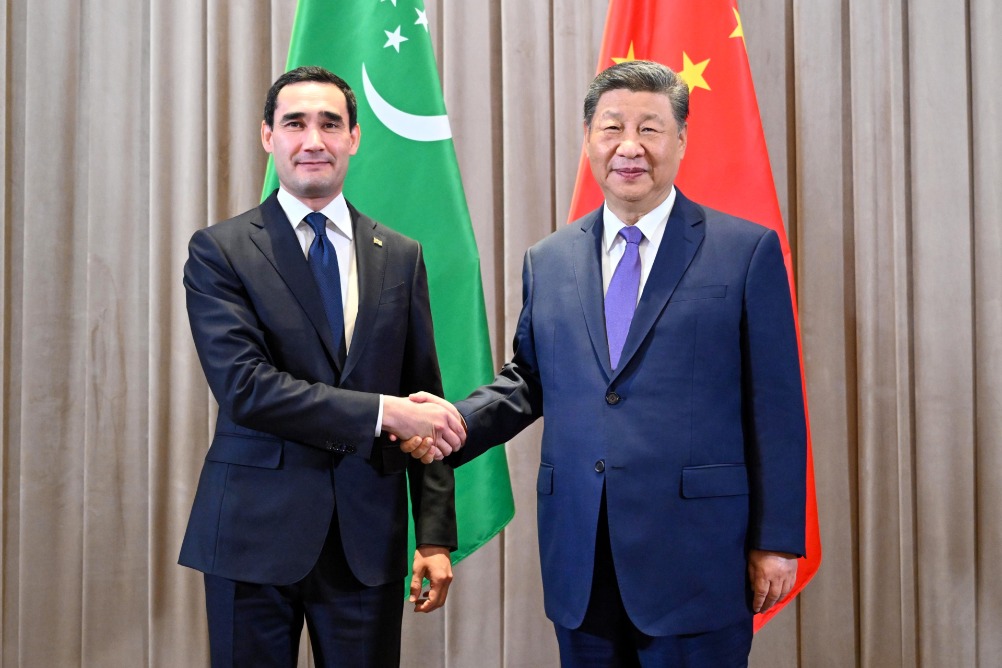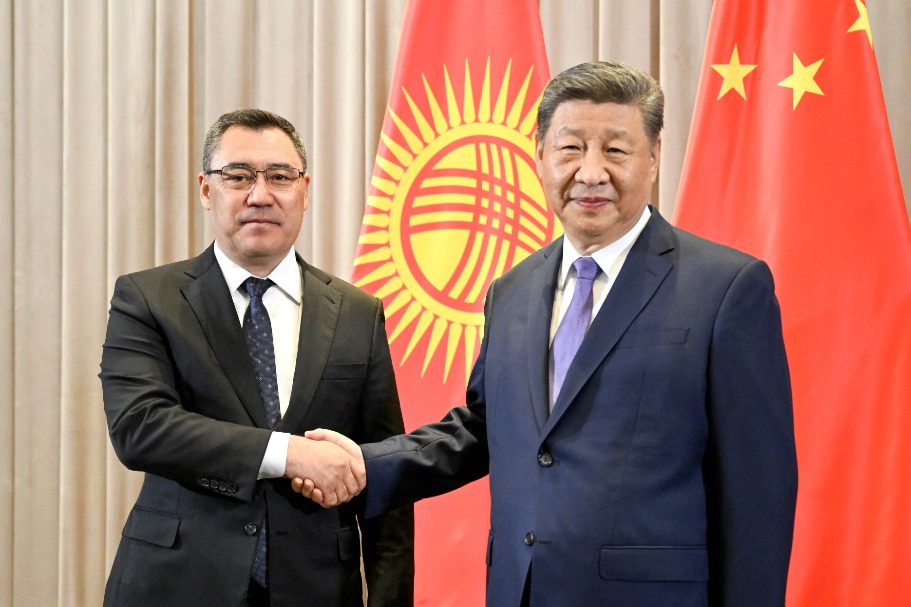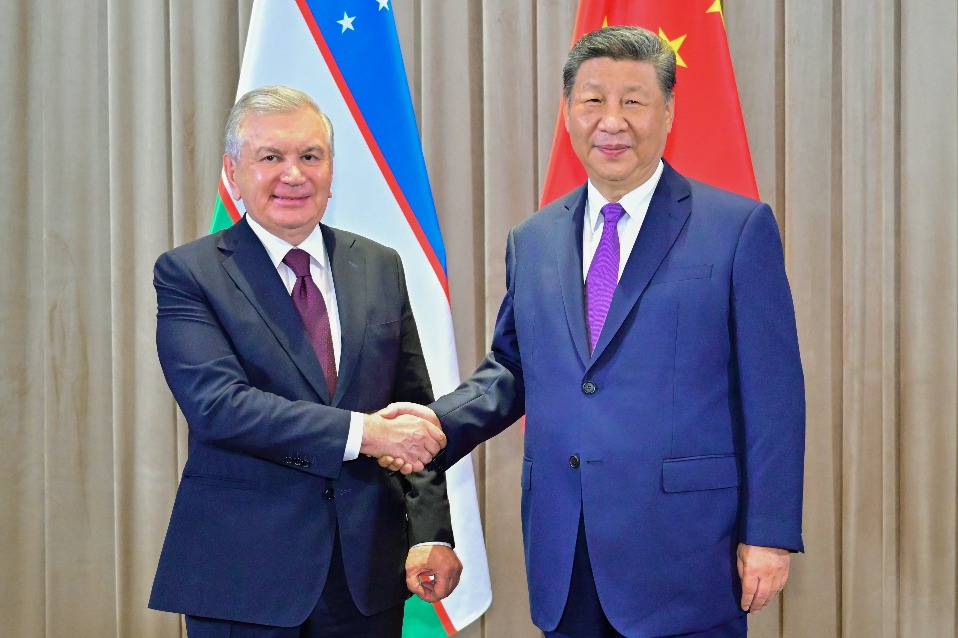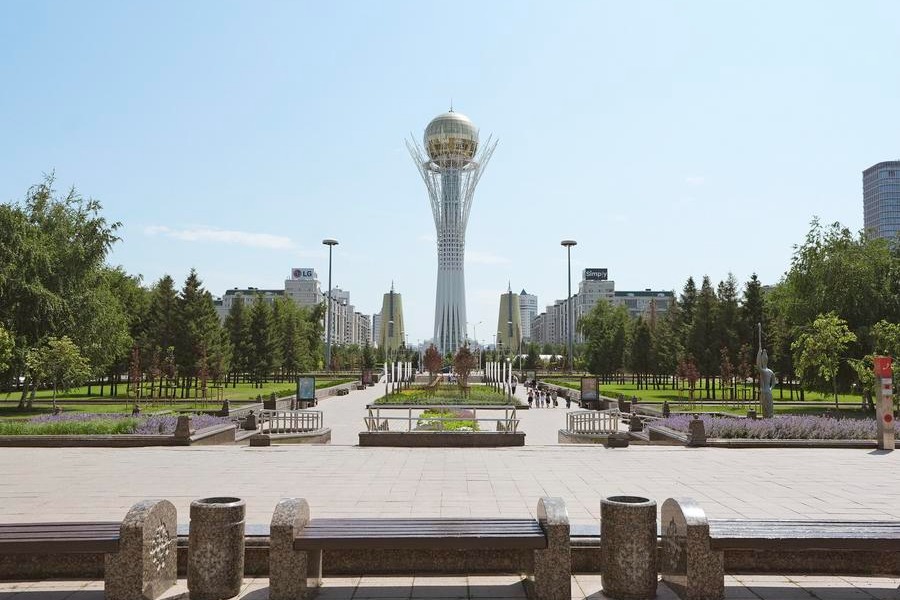Ground prepared for private sector's growth


The communique of the recently concluded third plenary session of the 20th Central Committee of the Communist Party of China said the Party will consolidate and develop the public sector, and encourage, support and guide the development of the non-public sector. And the decision adopted at the plenum said China will formulate a private sector promotion law. This can be seen as the basic requirement of developing the socialist economic system in line with China's political proposition and economic guideline.
That the coordinated development of public and private enterprises can boost the development of all sectors is self-evident.
The principle of high-quality coordinated development advocates that enterprises with different ownership types be guided by the new development philosophy of creating a high-level development ecology of mutually beneficial cooperation, which in turn will help the public and private enterprises to become stronger, perform better and grow bigger.
China has been improving the development environment and policies for private enterprises, in order to help them develop better. The country has expedited the construction of a unified national market, issued a unified negative list for market access, reduced the number of items on the negative list, and removed many market entry barriers for enterprises. It has also introduced an array of policies to better protect intellectual property rights and facilitate the reform of privately owned enterprises.
Different departments have issued various supportive policies to attract private investment, by granting fair access to enterprises, increasing financial support to them, boosting consumption, strengthening human resource support, optimizing taxation, guaranteeing legal protection and vowing to honor agreements.
China continues to support the development of the private enterprises, by strengthening the legal system, guaranteeing financing for small and medium-sized enterprises, amending several related laws, and employing market rules to ensure fair competition and protect enterprises' legal rights.
China has also improved the functions of administrative organs to boost the development of private enterprises. Last year, it established the private economic development bureau, which has become a special department focusing on the development of private enterprises.
The main responsibilities of the bureau include tracking, studying and analyzing the development of private enterprises, coordinating the formulation of policies and measures to promote their development, and issuing policies to attract more private investments.
The bureau is also responsible for establishing a mechanism for regular communication with private enterprises, coordinating efforts to solve the major problems hindering the development of private enterprises, and helping enhance their global competitiveness.
China's private enterprises have expanded in size, improved the quality of their products and services, and sharpened their competitive edge in the new era. Private enterprises contribute nearly 50 percent to the country's tax revenue and account for 60 percent of its GDP. They also account for about 70 percent of China's technological innovation, 80 percent of urban employment, and 90 percent of the total number of enterprises.
The private sector has become an indispensable force driving China's development, not least because it creates the majority of the jobs in the country. No wonder private enterprises were encouraged to participate in the development-driven poverty alleviation program. From 2015 to the end of 2020, about 127,000 private enterprises participated in the program, investing more than 110 billion yuan ($15.14 billion) and benefiting about 18.04 million poor people.
Since the launch of reform and opening-up in 1978, China's private and State-owned enterprises have been enjoying coordinated development. In the new era, they have been growing together at a faster pace thanks to the improved business environment, deepening of SOE reform, and adjustments in the policies to facilitate the development of the public sector and the mixed-ownership economy.
The coordinated development of the public and private sectors features division of labor and further integration of the industry and supply chains of the public and private sectors. In general, SOEs are large in size and financially stronger, while private enterprises are widely distributed, with the former having the capacity to drive other enterprises' development and the latter playing a key role in the industrial support system.
Public-private sector cooperation has strengthened their industry and supply chains. As the leaders of the industry chains in many sectors, the SOEs can provide key resources to private enterprises to boost the latter's development. This coordinated development pattern could lead to the formation of a community of common interests through the integration of capital and technology, while the SOEs can establish shared platforms to promote the high-quality development and innovation of private enterprises.
The author is director of the Economic Research Institute of the Chinese Academy of Social Sciences. The views don't necessarily reflect those of China Daily.
If you have a specific expertise, or would like to share your thought about our stories, then send us your writings at opinion@chinadaily.com.cn, and comment@chinadaily.com.cn.

































